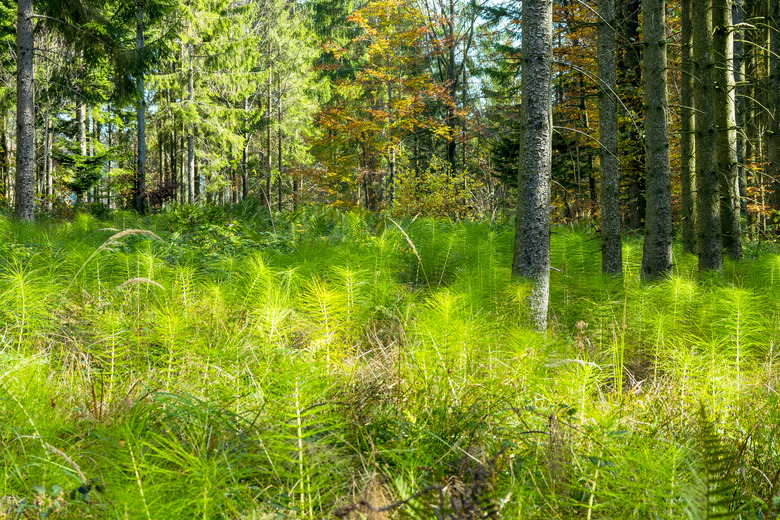A Horsetail 'S Life Cycle
Horsetails belong to a family of plants that were widespread in the Devonian period, about 350 million years ago. In that era, the plants were abundant, and they grew to the size of trees. The horsetails of today, though considerably smaller, are sometimes referred to as living fossils.
Description
Description
These early land plants have ridged stems reinforced with silica for support. Above the ground, the stem is green, allowing the plant to photosynthesize. The underground portion of the stem is covered in tiny hairs, called rhizomes, which anchor the plant into the soil.
Stem Construction
Stem Construction
The horsetail's vascular system transports food and water to the various plant structures, and hollow spaces inside both the root and stem allow for gas dispersion within the plant. The segmented stem has tiny gray leaves and mini-branches at each joint, perhaps an adaptation to avoid water loss.
Reproduction
Reproduction
Horsetails do not flower. Like ferns, they reproduce through the dispersal of spores.
Spore-Producing Phase
Spore-Producing Phase
Spore cases form small cones on the stems of the plant. The spores themselves are dispersed by the wind. If they land in a wet or damp place, they can germinate and grow into tiny plants called gametophytes.
Gametophytes
Gametophytes
The gametophyte grows two different structures, one holding female gametes in tiny cups and the other holding male gametes equipped with tails to aid in movement. This phase of the horsetail's life cycle, known as gametophyte generation, exists to ensure genetic diversity.
Fertilization
Fertilization
Horsetails rely on rain for fertilization. The arrival of rain releases the male gametes, which then swim to the cups holding the female cells. The embryos grow to form the stem-like structure that characterizes the mature horsetail.
References
Cite This Article
MLA
Wachman, Monica. "A Horsetail 'S Life Cycle" sciencing.com, https://www.sciencing.com/horsetail-s-life-cycle-5673810/. 22 November 2019.
APA
Wachman, Monica. (2019, November 22). A Horsetail 'S Life Cycle. sciencing.com. Retrieved from https://www.sciencing.com/horsetail-s-life-cycle-5673810/
Chicago
Wachman, Monica. A Horsetail 'S Life Cycle last modified March 24, 2022. https://www.sciencing.com/horsetail-s-life-cycle-5673810/
